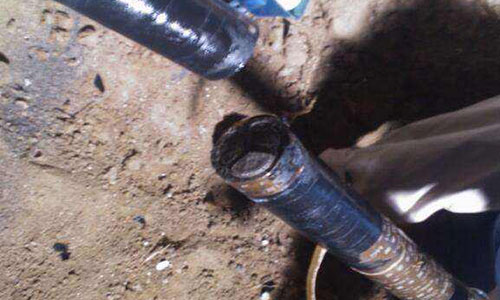
In urban power grid renovation projects, power cables have been widely used.
However, due to the special characteristics of the cable, the installation, operation, and maintenance of the cable have special requirements.
Dampness or water in the cable reduces the insulation resistance of the thread, which are several vital aspects that cause operating accidents in the cable line.
(1) The new entire cable in the factory, the two ends should be sealed with a plastic sealing sleeve. But in the construction site according to the actual situation after using a section, the remaining part of the plastic cloth is wrapped with a break.
Due to the usual open-air placement and sealing is not good, for a long time, there will inevitably be water vapor infiltration into the cable.
(2) Cable laying, need to often cross roads, bridges, culverts, etc...
Due to weather or other reasons, the cable trench also accumulates a lot of water from time to time, During the laying process, there will inevitably be the case of the cable head immersed in water, due to poorly wrapped or broken plastic sheeting and water into the cable.
In addition, when traction and tube, sometimes the outer sheath and even steel armor will be scratched phenomenon when using mechanical traction, this phenomenon is particularly prominent.
(3) After the cable laying is completed, due to the construction conditions of the site restrictions can not be timely cable head production, so the unsealed cable break is exposed to the air for a long time, or even immersed in water, so that a large number of water vapor into the cable.
(4) In the process of cable head fabrication, water may seep in during the process of handling the cable ends due to human negligence.
(5) In the normal operation of the cable, if for some reason a fault such as a breakdown occurs, the water in the cable trench will enter the inside of the cable along the fault point. In civil construction, especially on the construction site using large construction machinery.
Due to a variety of human factors caused by cable breakage or breakdown of accidents, but also common. When such accidents occur, the cable insulation is severely damaged, which will also cause the cable into the water.
(1) When purchasing cables, manufacturers with good quality must be selected, and strict tests shall be carried out on the samples submitted by each cable manufacturer.
(2) Ensure that the cable ends are well sealed. Special sealing sleeves shall be used to prevent moisture infiltration for sawn cable ends, whether stacked or laid.
(3) The cable head shall be made in time after the wire is laid. If it is impossible to make it immediately due to conditions, the cable head shall be sealed and placed overhead.
(4) Improve the manufacturing process of solid cable heads to prevent water from entering the cable head during the manufacturing process.
(5) During cable laying, construction measures shall be taken to prevent the cable sheath from being damaged by external forces.
(6) If the operating environment is corrosive or termite, the cable and laying mode shall be reasonably selected.
The best solution to avoid water in the cable is to prevent it, once the cable is seriously damp is basically the same as scrap, so in the early, we can choose high-quality cable to reduce the risk of moisture.
In addition to the use of high-quality cables, daily inspection and maintenance is also very important.
After all, with the elimination of all kinds of hidden faults, the cable can be used normally, will not lead to more serious accidents, and only in this way can guarantee the safe and stable operation of the distribution network.